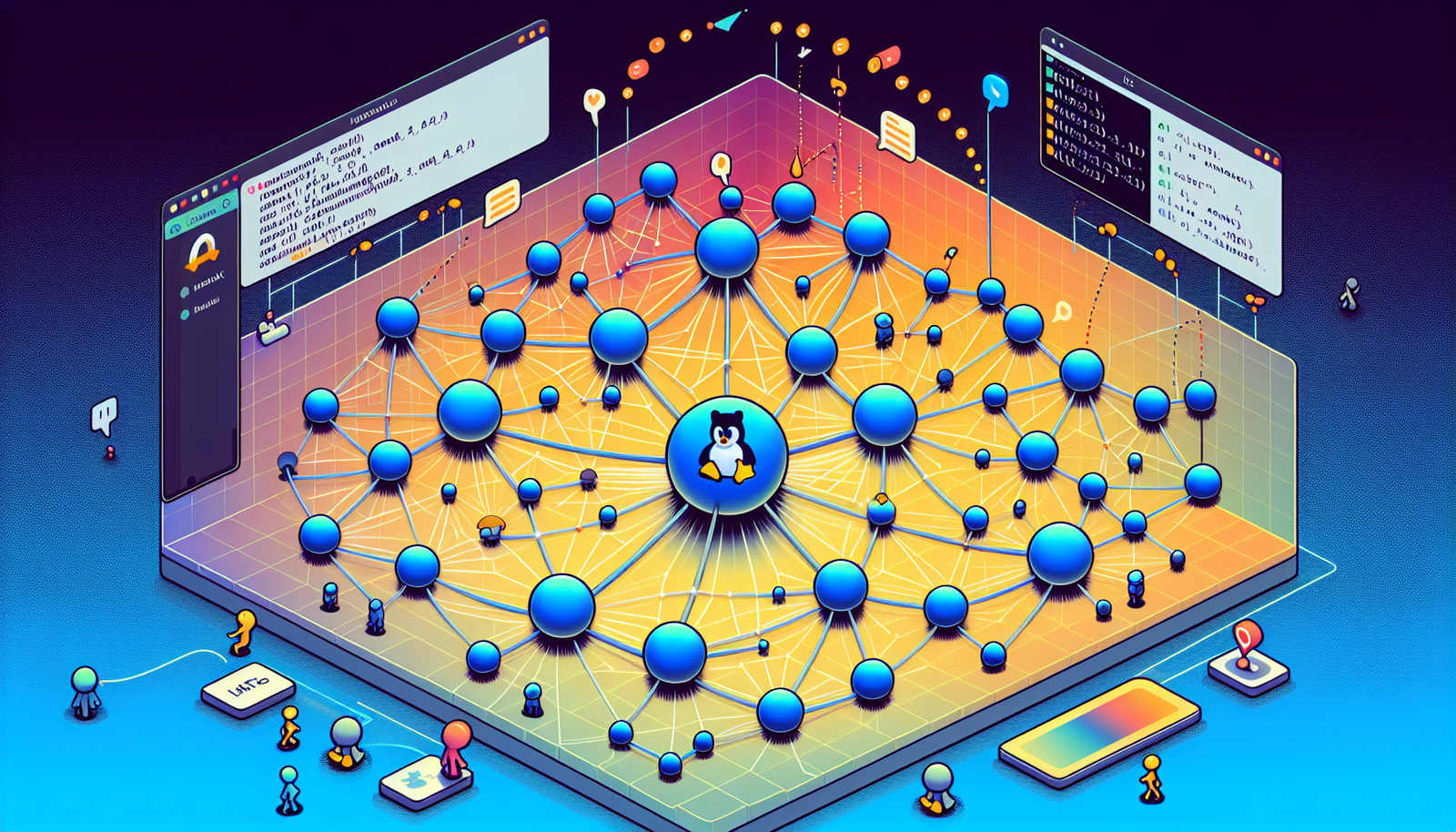Exploring Network Dynamics with NetworkX on Linux
by George Whittaker
Introduction
In today’s data-driven world, understanding the complex relationships within networks—from social interactions to infrastructure systems—is more important than ever. Network analysis offers a set of techniques and tools for examining these relationships, providing valuable insights into the structure and dynamics of various systems. Among the myriad of tools available, NetworkX stands out as a powerful Python library perfectly suited for intricate analyses, particularly when utilized on robust platforms like Linux. This article delves into effectively using NetworkX for network analysis on a Linux environment, offering foundational knowledge along with practical applications.
Setting Up the Environment
To embark on your network analysis journey, you must first create an optimal environment on your Linux system. Follow this step-by-step guide to get started:
-
Installing Linux: If you haven’t installed Linux yet, Ubuntu is a beginner-friendly distribution, known for its user-friendly interface and extensive community support. Download it from the official Ubuntu website and adhere to the installation guide for setup.
-
Setting up Python and Pip: Most Linux distributions come with Python pre-installed. Confirm this by executing
python3 --versionin your terminal. If Python isn’t installed, you can easily install it using your distribution’s package manager, for instance,sudo apt install python3. Following that, install pip, Python’s package manager, with the commandsudo apt install python3-pip. -
Installing NetworkX: With Python and pip ready, install NetworkX by running
pip3 install networkx. Optionally, for visualizing networks, install Matplotlib as well withpip3 install matplotlib.
Fundamentals of Network Analysis
Network analysis revolves around networks, which comprise nodes (or vertices) connected by edges (or links). Here’s a breakdown of crucial concepts:
-
Nodes and Edges: Here, nodes represent entities (like people or cities), while edges illustrate the relationships or interactions between them.
-
Types of Networks:
- Undirected Networks: These connections lack direction (e.g., friendships).
- Directed Networks: These connections have directionality (e.g., follower relationships in social media).
- Weighted Networks: Networks where edges possess weights, reflecting the strength or capacity of connections.
-
Network Metrics:
- Degree: The number of connections a node maintains.
- Centrality Measures: Indicators of the most influential nodes in a network.
- Clustering Coefficient: Measures the likelihood that nodes in a network will cluster together.
Getting Started with NetworkX
NetworkX simplifies the process of creating and manipulating networks. Here’s how to get started:
-
Creating a Graph:
import networkx as nx G = nx.Graph() # Create an undirected graph -
Adding Nodes and Edges:
G.add_node(1) G.add_edge(1, 2) # Node 2 is added automatically if it's not already present -
Displaying Basic Network Statistics:
print(f"Number of nodes: {G.number_of_nodes()}")
print(f"Number of edges: {G.number_of_edges()}")
- Practical Example: Create a small network and analyze basic properties like degree and simple pathfinding between nodes.
Visualizing Networks in NetworkX
Visualization is a critical component of network analysis, offering intuitive insights into data:
- Basic Visualization Techniques: Use Matplotlib to create visual representations of networks, highlighting nodes, edges, and key metrics.
- Customizing Network Visualizations: Adjust colors, node sizes, and edge thickness to emphasize different attributes of the network.
Conclusion
This guide equips you with the tools and knowledge required to embark on network analysis utilizing NetworkX on Linux, encompassing everything from setup to advanced analysis and visualization techniques. By harnessing this powerful combination, you can gain deeper insights into intricate network structures and dynamics.
George Whittaker is the editor of Linux Journal and a regular contributor, with two decades of technology writing experience and over 15 years as a Linux user. In his spare time, he enjoys programming, reading, and gaming.

